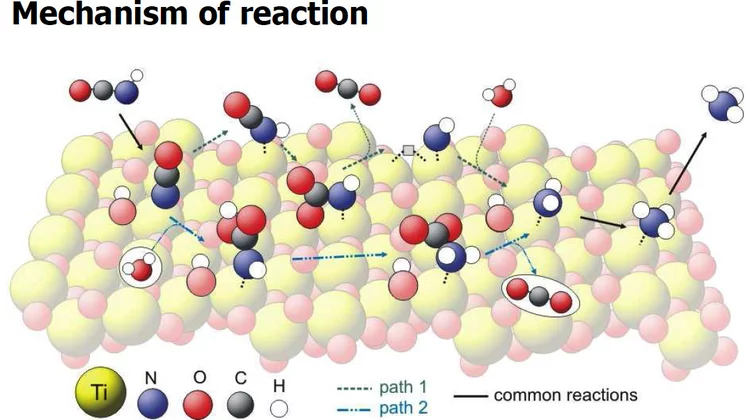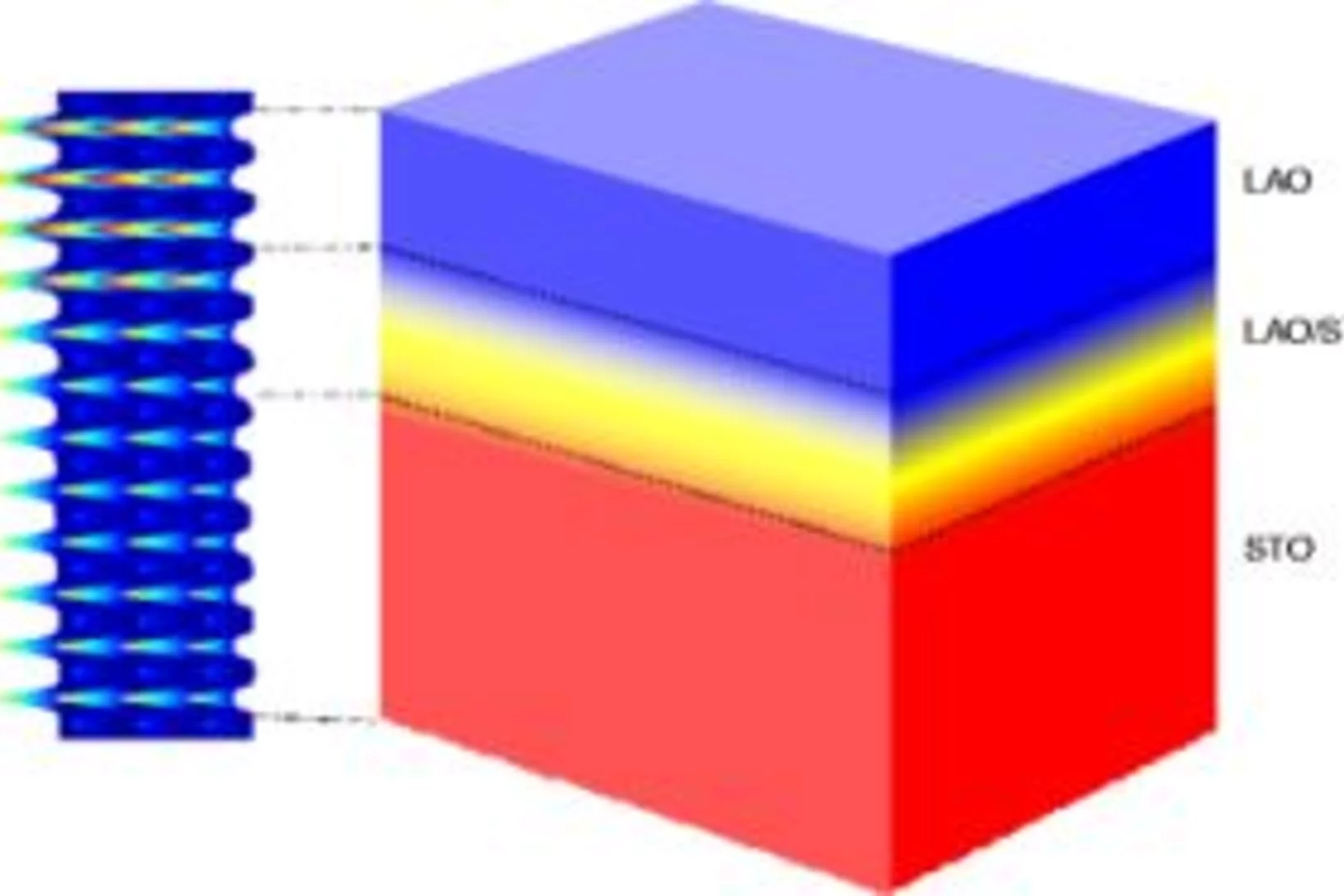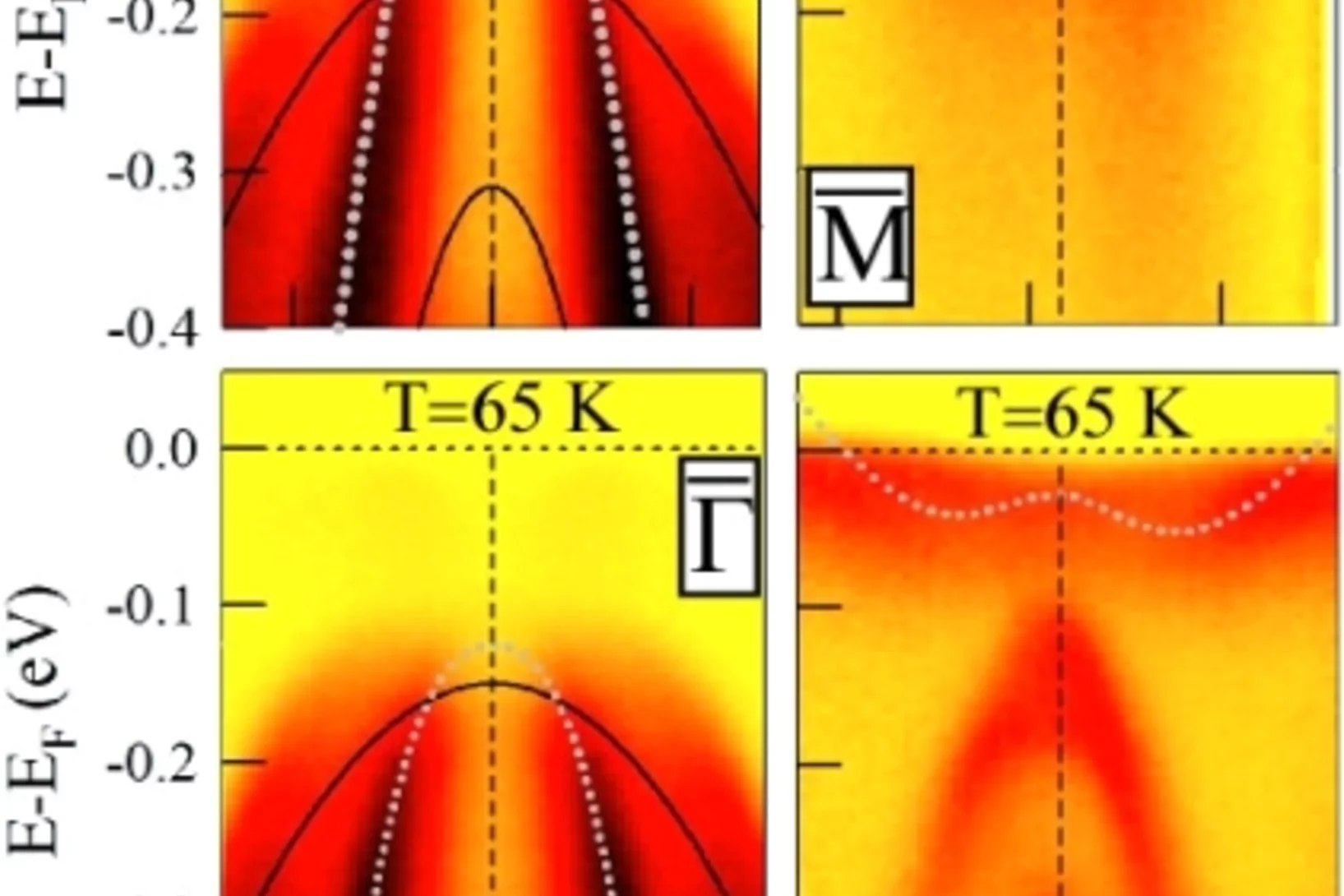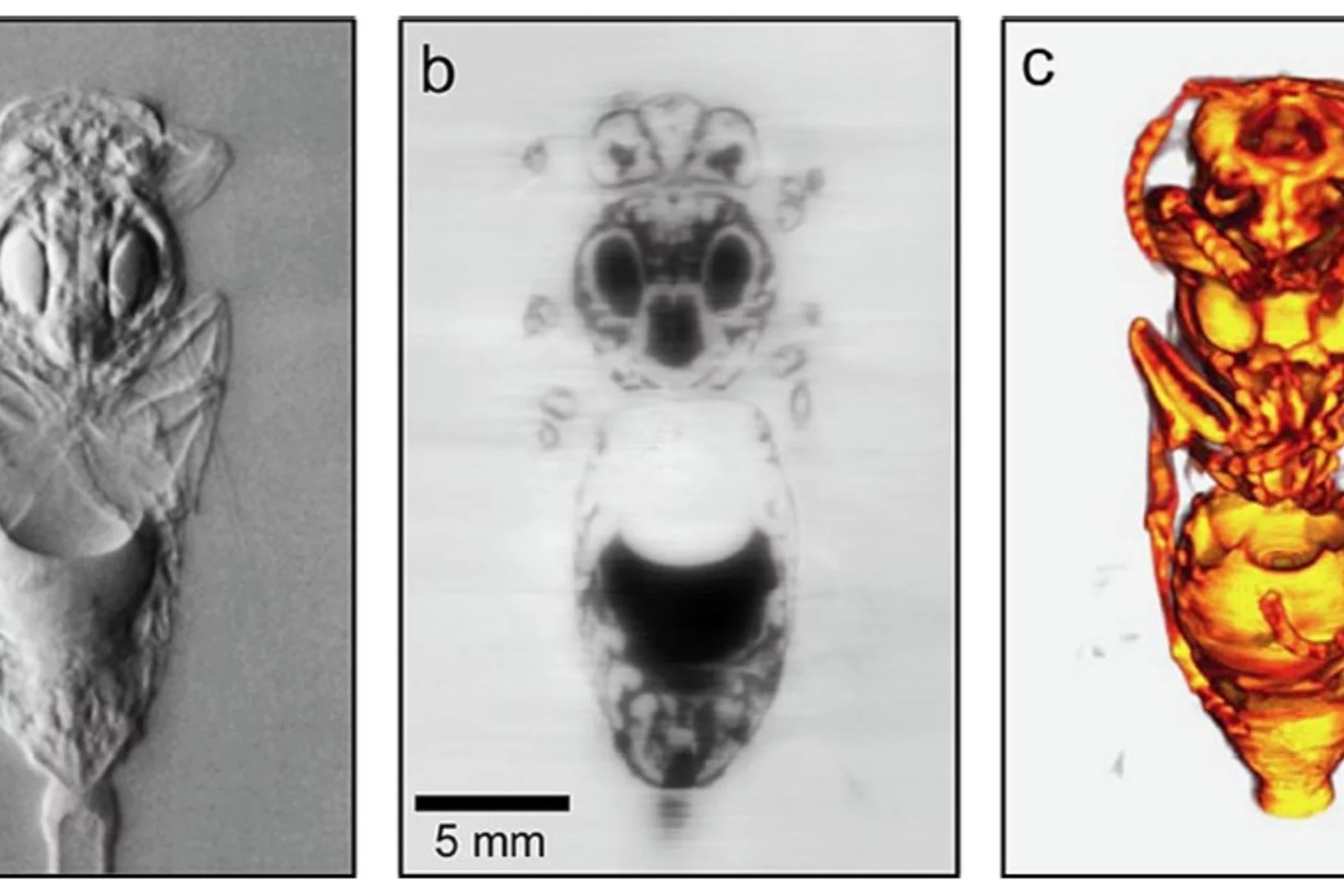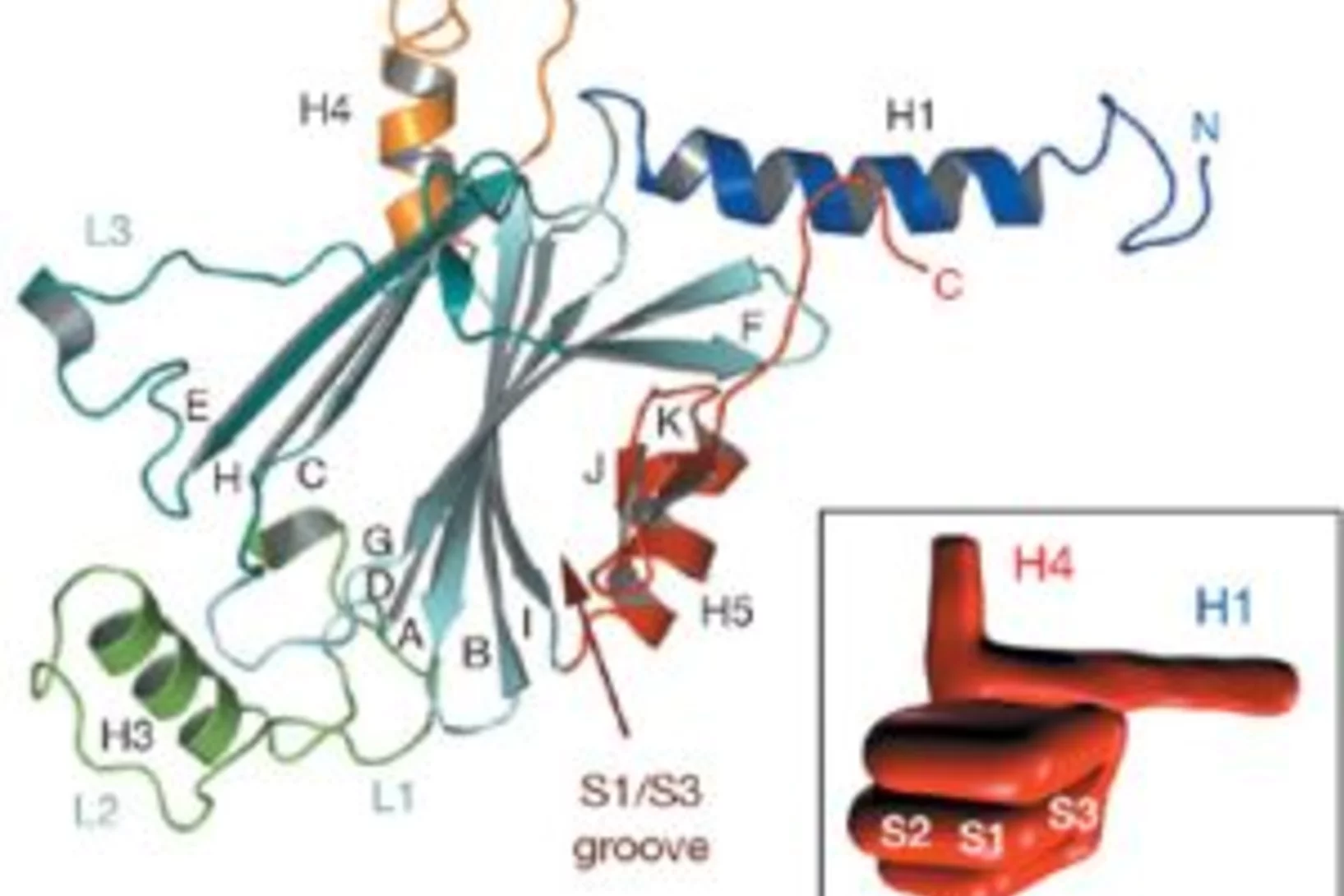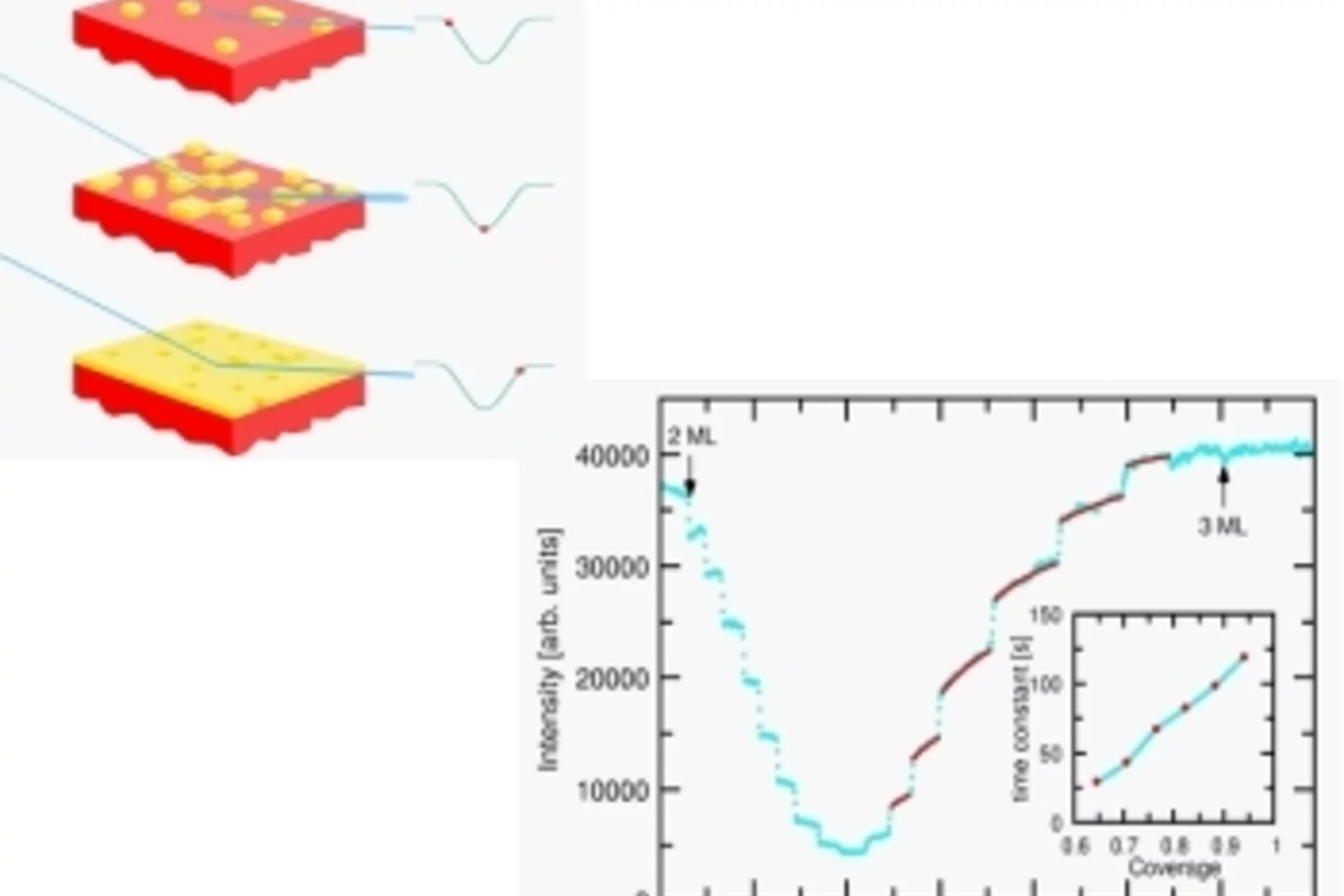Am Paul Scherrer Institut suchen Forschende nach Antworten auf die fundamentale Frage nach den Grundstrukturen der Materie und den fundamentalen Funktionsprinzipien in der Natur. Sie untersuchen Aufbau und Eigenschaften der Elementarteilchen – der kleinsten Bausteine der Materie – oder gehen der Frage nach, wie biologische Moleküle aufgebaut sind und wie sie ihre Funktion erfüllen. Das so gewonnene Wissen öffnet neue Lösungsansätze in Wissenschaft, Medizin oder Technologie.
Mehr dazu unter Überblick Grundlagen der Natur
Vibrational Spectra of Adsorbates from DFT
The hydrolysis of isocyanic acid was studied experimentally and theoretically and a reaction mechanism on different catalysts was established. The decreasing NOx emission limits for diesel vehicles impel the further development of the existing NOx deactivation technologies, particularly the selective catalytic reduction (SCR) of nitrogen oxides with urea. In the urea-SCR process, urea is injected into the hot exhaust gas, where it thermally decomposes into isocyanic acid (HNCO) and ammonia.
The conducting meat in the insulating sandwich
In 2004, it was discovered that when a layer of LaAlO3 (LAO) is in contact with a layer of SrTiO3 (STO), an ultrathin layer of highly conducting material is formed where they contact one another, despite the fact that both LAO and STO are insulators. The underlying physics responsible for this phenomenon is still much disputed, despite a worldwide concerted research drive since then to explain it.
The exciting story of TiSe2
In this story of TiSe2, experiment and theory meet to provide an explanation for a long-standing enigma. In this system, the electrons rearrange themselves spontaneously at low temperature, resulting in a new periodicity from that of the original lattice. This phase change is driven by a decrease in the total energy of the system. However, the nature of this transition has been a matter of controversy for a long time.
Is Smaller Stronger?
In 2004 researcher discovered that a single crystalline metal is stronger when the sample volume is reduced to the micron or even submicron range. In an ongoing debate on the origin of this phenomenon classical deformation theories are questioned. The suspicion that structural defects, i.e. deviations from perfect crystalline structure would play an important role in the smaller is stronger effect, could not be verified because of the lack of an appropriate measuring technique.
Making the invisible visible
Using x-rays scientists have learned to make the invisible visible. Since almost 100 years doctors use the difference in x-ray absorption between bones and tissue to diagonose their patients.
A virus in a nutshell
Nature has found remarkable ways to protect sensitive objects. One example is the seed of a nut which is protected by its shell. Another are viruses from the cypovirus family. They are hidden inside tiny natural crystals where they can survive harsh conditions until they meet their target, the gut of the silkworm. Here the virus is released from the crystal causing a virus infection of the worm. Researchers have now unraveled the structure of these natural protein crystals.
A microscope without a lens
It is known since a long time that x-rays, which are nothing but light of very short wave length, can be used for microscopy. This is particularly attractive because due to the small wave length x-rays allow studying objects which are invisibly small in an optical microscope.
Looking inside fossilised embryos
Although only recently discovered, the fossil record of embryonic development has already begun to challenge cherished hypotheses on the origin of major animal groups. Synchrotron-based X-ray Tomographic Microscopy has provided unparalleled insight into the anatomy and preservation of these fossil remains and this has allowed us to test competing hypotheses on their nature.
Phase Imaging with Neutrons
Neutrons are usually considered as small massive particles with a size of about 10^-15 meters. Due to the wave-particle duality of quantum mechanics, however, they can equivalently be considered as matter wave packets whose spatial extent may be large enough to show interference effects similar to what can be observed with visible laser light.
How to avoid atomic sandpaper
When growing thin films of novel materials, smooth surfaces are a must. How else could one stack them layer by layer, as needed in optical coatings, sensors or conductors? One method known to produce atomically smooth films is Pulsed Laser Deposition (PLD).
Seeing ever finer Details with X-Rays
X-ray radiographic absorption imaging is an invaluable tool in medical diagnostics and materials science. For biological tissue samples, polymers, or fiber composites, however, the use of conventional X-ray radiography is limited due to their weak absorption. This is resolved at highly brilliant X-ray synchrotron or micro-focus sources by using phase-sensitive imaging methods to improve contrast.
Shining light on superconductors
More than 20 years ago researchers in Switzerland discovered that certain materials transport electrical current without any loss. For this they need to be cooled, but because they do so at relatively high temperatures (up to -150°C) they are called high temperature superconductors. How exactly the electrons transport current in such materials is still a mystery. But the electrons can be studied using the photoelectric effect where light of high energy knocks an electron out of the material.
Magnets shine in a different color
Measuring -or feeling- magnetic interactions looks simple at first glance: holding two magnets close to each other gives an immediate idea. How about the case when the 'magnets of interest' are tiny and amount to nothing more than atoms? X-rays generated at the Swiss Light Source allow 'zooming in' on magnetic interactions relevant at inter-atomic scale: we bring forward the first evidence of local spin flips of atomic moments in a 'photon-in photon-out' scattering experiment.
Read full article
Dance of the domains
In a ferromagnet regions exist where all the atoms orient their atomic compass neddles into one direction. These regions are called domains. A recent experiment succeeded in exciting such domains and watching their vibration and subsequent relaxation to the original state. This is the Dance of the domains.
Controlling the ribosome
Ribosomes can be thought of as factories that build proteins from a set of genetic instructions. Translation relies on two selection processes: a) charging of tRNA by selection of the correct aminoacid to be covalently bound to it, b) the selection of the tRNA as specified by the codon of the mRNA. Aminoacyl-tRNA synthetases catalyse the first of these steps using hydrolysis of ATP.

